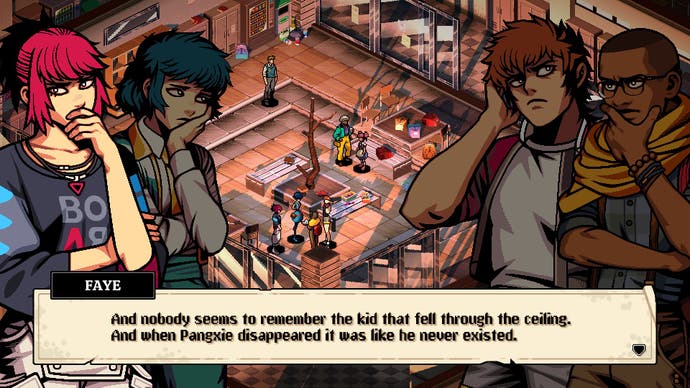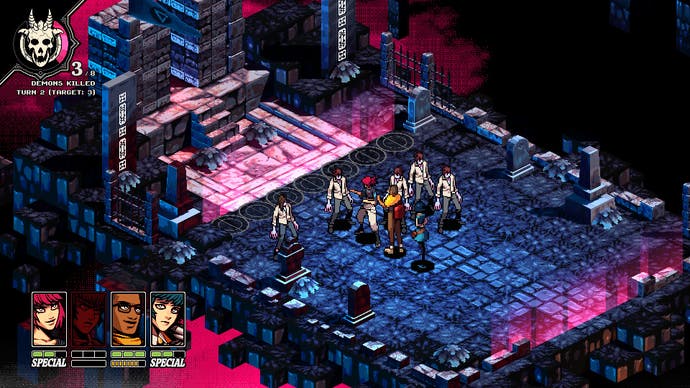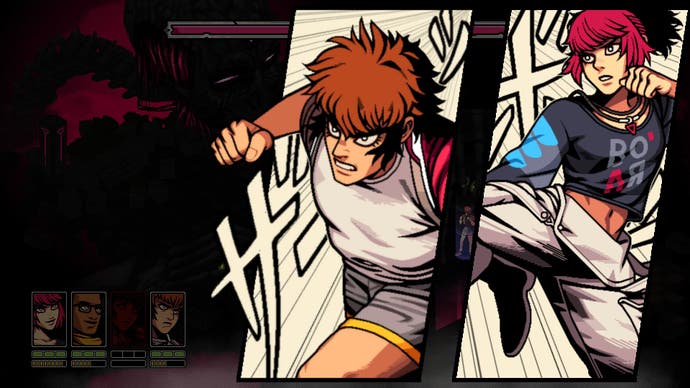It always amused me, watching Buffy on TV, that nobody else in the school seemed to be aware of what was going on. Buffy and her friends were off slaying vampires and demons and investigating strange happenings that mysteriously occurred repeatedly in this one school, but her peers remained seemingly oblivious. At least, until that prom episode where they finally bothered to thank her.
There’s a similar occurrence in Demonschool, except here it’s baked into the narrative. There are demons at school – surprise(!), unless the name gave it away – but none of the students are aware, their minds wiped of any and all knowledge. It’s up to a crack team of demon slaying students with special powers to thwart their teachers and find out why.
Demonschool is a blend of 90s vibes and Buffy-esque storytelling with Persona-inspired gameplay and tactical combat. It’s playful, funny, nostalgic, and spooky in equal measure and I can’t wait for the full release on 13th September, even if it’s on a Friday. But there’s no reason to be alarmed!
The main character is student Faye, the last remaining demon hunter who leads with her high-kicking feet. She recruits a number of schoolkids to her cause who each awaken to their demon-hunting powers: so far that’s the nerdy Knute, the bookish Namako, and the trademark lovable himbo Destin, though the final game will include 15 playable characters in total. There’s even a foppish professor helping them out.
The Steam Next Fest demo begins partway into the story, after Faye and her crew hand in their first assignment: the discovery of a haunted VHS tape. Next they’re on the hunt for a demon paintbrush, the next in a series of keys that open portals to the demon world. It appears to lend the narrative an episodic flow where we see what adventures the gang will get up to next.

The narrative plays out over a number of days, with each day split between morning, evening, and night-time. So far, there’s less choice than in Persona’s equivalent calendar of events, instead providing a clear structure in which the plot unfolds. But there’s still time to explore as locations are selected from a menu and Faye can chat with other students in the school and the surrounding area, take on sidequests, and improve her relationships with friends.
The flip side to the social sim aspect is tactical combat. At set points, characters are transported to the demon world where they battle enemies on a grid akin to chess. The aim is to defeat a set number of enemies before reaching the far side to seal the demons away. Characters have unique abilities and move across the grid in set patterns, as well as having individual resistances and weaknesses.


Positioning is imperative, then. Faye, for instance, has a knockback ability to her attacks, meaning ideal positioning allows a whole line of enemies to be attacked in one go. Namako, meanwhile, can swap positions with an enemy and leave them stunned, perfectly lining them up for a double attack between two characters. Each character has just one ability and a special move in the demo, so options do feel a little limited and repetitive, but I’m hoping this will grow in complexity in the final game.
But it’s the tone of the game that’s gripped me more than anything. It’s set in the 90s and has a setting and references to match – the school’s computer lab is filled with chunky PCs and dial-up internet, while one character uses their mobile phone to play Snake. Ah, the memories!
Added to the bold artwork, a dark yet funky soundtrack, and an over-the-top cartoonish aesthetic (I love the bouncy run animation), and Demonschool is yet another brilliant example of silly adults bested by a plucky gang of pesky kids.





